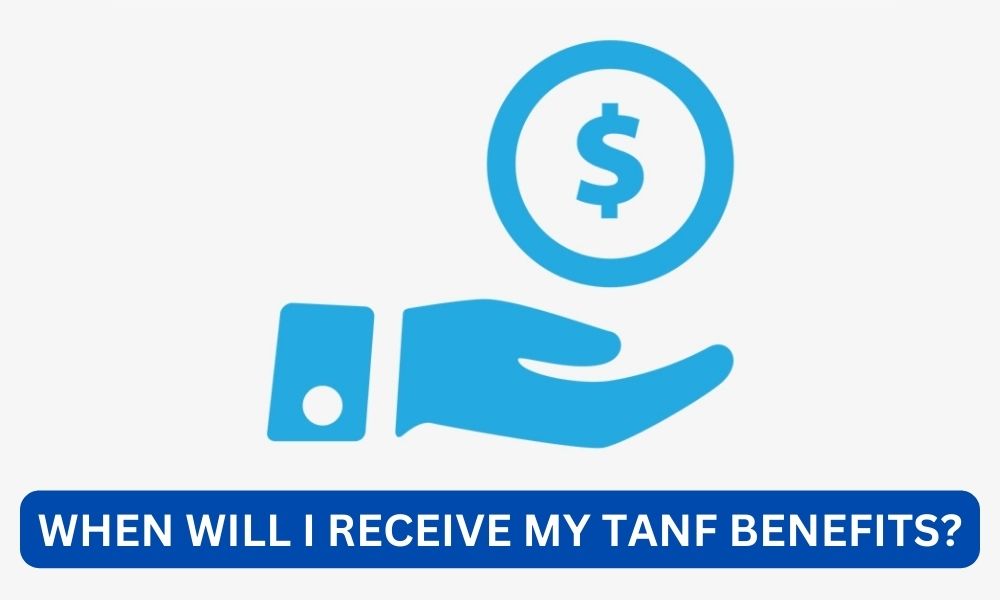Temporary Assistance for Needy Families (TANF) is a federal program that provides financial assistance to low-income families with children. It was created in 1996 as part of the Personal Responsibility and Work Opportunity Reconciliation Act (PRWORA) and replaced the Aid to Families with Dependent Children (AFDC) program. TANF aims to help families achieve self-sufficiency by providing them with temporary cash assistance, job training, and other supportive services.
Each state has its own TANF program, which is administered by the state’s Department of Human Services or Social Services. Eligibility for TANF benefits varies from state to state, but generally, families must have a low income and have at least one child under the age of 18 to qualify. The amount of assistance provided also varies depending on the state and the family’s circumstances.
If you are eligible for TANF benefits, you may be wondering when you will receive them. In this article, we will discuss the factors that affect the timing of TANF benefit payments and provide some tips on how to ensure you receive your benefits in a timely manner.
Contents
Factors Affecting TANF Benefit Payments
There are several factors that can affect when you will receive your TANF benefits. These include:
Read:What age for medicare benefits?- State policies: As mentioned earlier, each state has its own TANF program, and the policies and procedures may differ from state to state. Some states may have a more streamlined process for distributing benefits, while others may have more complex eligibility requirements that can delay payments.
- Application process: The time it takes to process your TANF application can also affect when you will receive your benefits. In some states, the application process can take several weeks, while in others, it may only take a few days.
- Verification of information: Before approving your TANF application, the state may need to verify the information you provided, such as your income, household size, and assets. This verification process can take time and may delay the issuance of benefits.
- Payment method: TANF benefits can be paid through different methods, such as direct deposit, electronic benefit transfer (EBT), or paper checks. The method used by your state can affect how quickly you receive your benefits. For example, direct deposit is usually the fastest method, while paper checks may take longer to arrive in the mail.
- Frequency of payments: TANF benefits are typically paid on a monthly basis, but some states may have a different payment schedule. For example, some states may issue benefits every two weeks, while others may pay on a weekly basis.
When Will I Receive My TANF Benefits?
The timing of TANF benefit payments can vary depending on the factors mentioned above. In general, you can expect to receive your benefits within 30 days of submitting your application. However, this timeline may be longer if there are delays in processing your application or verifying your information.
Read:How do i find out my social security benefit amountIf you are already receiving TANF benefits, you can expect to receive your payments on the same day each month. This date may vary depending on weekends and holidays, but your state should provide you with a schedule of payment dates.
It is important to note that TANF benefits are not retroactive, meaning you will not receive benefits for the time before your application was approved. Therefore, it is crucial to submit your application as soon as possible to avoid any delays in receiving your benefits.
Tips for Ensuring Timely TANF Benefit Payments
While the timing of TANF benefit payments is largely dependent on state policies and procedures, there are some steps you can take to ensure you receive your benefits in a timely manner. These include:
- Submit a complete and accurate application: To avoid any delays in processing your application, make sure to provide all the necessary information and documentation. This includes proof of income, household size, and any other required documents.
- Follow up with your state agency: If you have not received a response to your TANF application within a reasonable timeframe, it is a good idea to follow up with your state agency. They may be able to provide you with an update on the status of your application and any potential delays.
- Keep your information up to date: If there are any changes in your circumstances, such as a change in income or household size, make sure to inform your state agency as soon as possible. This will ensure that your benefits are calculated correctly and prevent any delays in receiving your payments.
- Choose direct deposit: As mentioned earlier, direct deposit is usually the fastest method for receiving TANF benefits. If possible, opt for this payment method to ensure you receive your benefits as quickly as possible.
Case Study: TANF Benefit Delays in California
To further illustrate the factors that can affect the timing of TANF benefit payments, let’s take a look at a case study from California. In 2018, the California Department of Social Services (CDSS) implemented a new computer system to process TANF applications and payments. However, the system had several technical issues, which resulted in significant delays in processing applications and issuing benefits.
Read:How to cancel snap benefits online?According to a report by the California State Auditor, the CDSS received over 1.1 million TANF applications in 2018, and only 60% of those applications were processed within the required 30-day timeframe. This delay in processing applications also resulted in a backlog of over 300,000 unprocessed applications, causing many families to experience significant delays in receiving their benefits.
The report also highlighted that the CDSS did not have a system in place to track the number of delayed payments, making it difficult to determine the extent of the problem. However, it was estimated that the delays affected thousands of families and resulted in over $200 million in delayed payments.
This case study shows the importance of having efficient systems and processes in place to ensure timely TANF benefit payments. It also highlights the impact that delays in benefit payments can have on low-income families who rely on these benefits to meet their basic needs.
Conclusion:
In conclusion, the timing of TANF benefit payments can vary depending on several factors, including state policies, the application process, and the verification of information. While there is no guaranteed timeline for receiving benefits, following the tips mentioned in this article can help ensure that you receive your benefits in a timely manner.
It is also essential to stay informed about any changes in TANF policies and procedures in your state, as these can also affect the timing of benefit payments. By understanding the factors that can affect the timing of TANF benefits and taking proactive steps to ensure timely payments, you can better manage your finances and provide for your family’s needs.
Remember, TANF benefits are meant to be temporary assistance, and the ultimate goal is to help families achieve self-sufficiency. Therefore, it is crucial to take advantage of the job training and other supportive services offered through the TANF program to improve your financial situation and reduce your reliance on benefits.
By working together with your state agency and taking steps to improve your financial stability, you can make the most of your TANF benefits and create a better future for yourself and your family.









